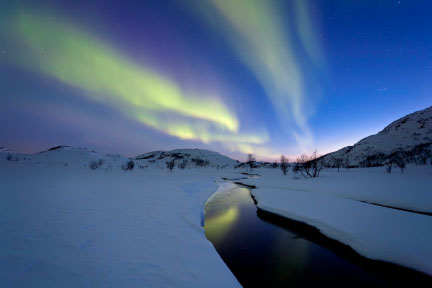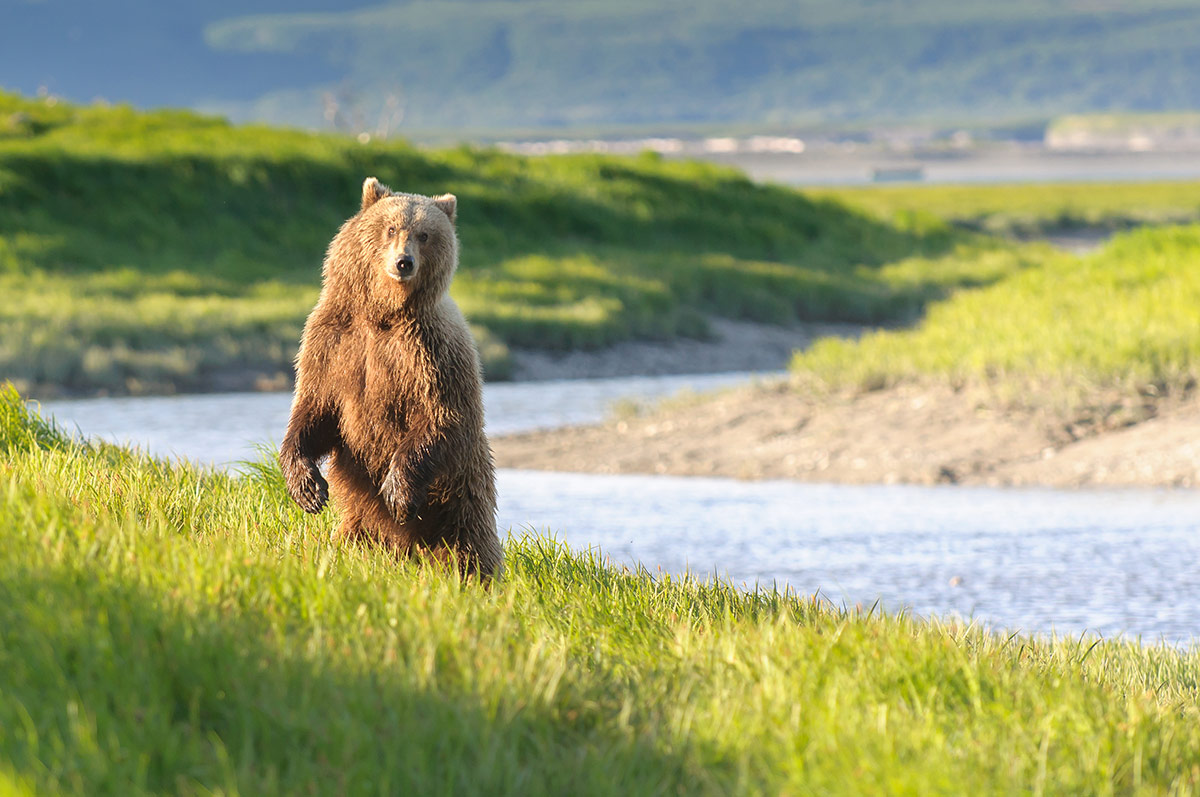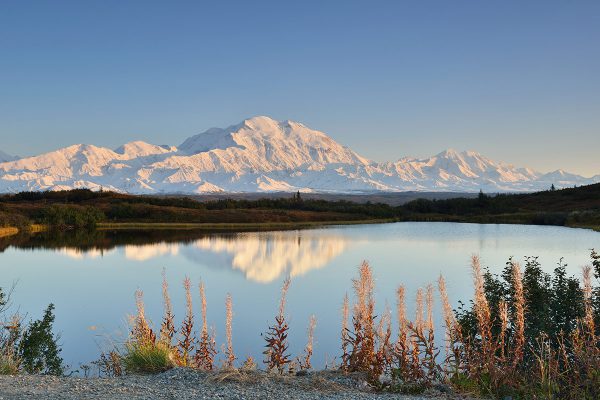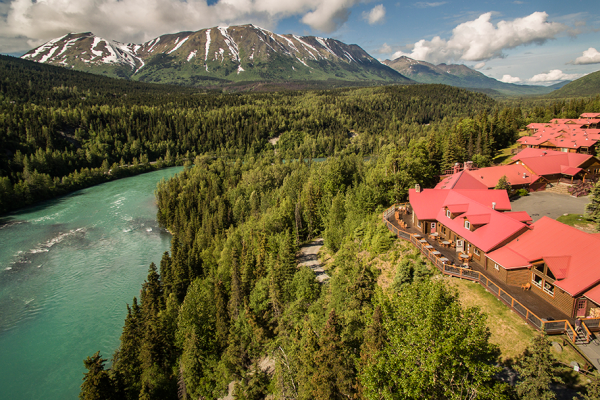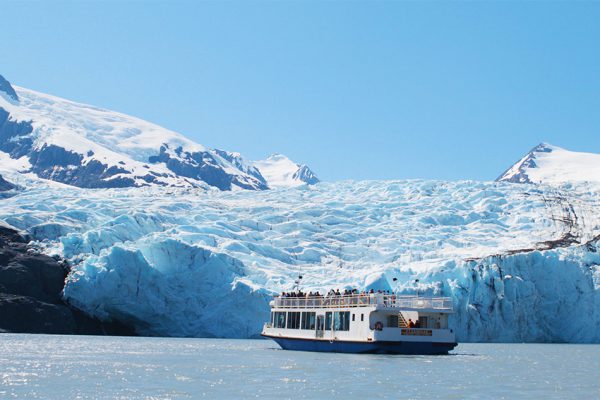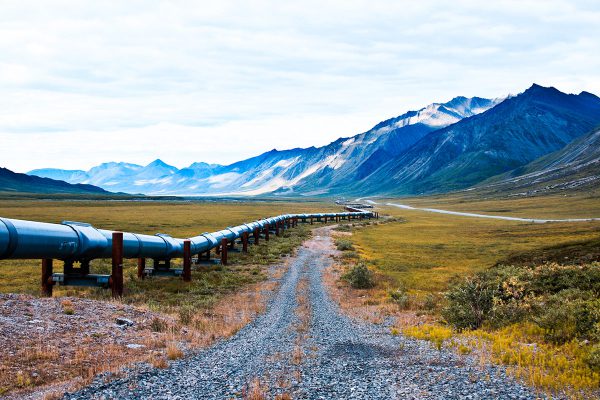- Aurora borealis (northern lights) can be seen an average of 243 days a year in Fairbanks. The northern lights are produced by charged electrons and protons striking the earth’s upper atmosphere.
- Alaska is less than 50 miles from Russia.
- While it is legal to shoot bears in Alaska, waking a sleeping bear for the purpose of taking a photograph is prohibited.
- The average temperature for Fairbanks in the month of January is -1 degree Fahrenheit.
- The highest temperature recorded in Alaska was 100 degrees Fahrenheit in Fort Yukon in 1915.
- The lowest temperature recorded in Alaska was -80 degrees Fahrenheit at Prospect Creek Camp in 1971.
- Alaska accounts for 25 percent of the oil produced in the United States.
- Alaska is the only state name that you can type on one row of a keyboard.
- Of the 20 highest peaks in the United States, 17 are in Alaska, including the highest peak in North America (20,320 ft. above sea level), Denali.
- Alaska contains more than 100 volcanoes and volcanic fields which have been active within the last two million years.
- Alaska is the only state that does not collect state sales tax or levy an individual income tax (some cities have sales tax, however).
- The fishing and seafood industry is the state’s largest private industry employer.
- The largest salmon ever caught was at the Kenai River. It weighed in at 97.5 pounds.
- There are more than 3,000 rivers and 3 million lakes in Alaska.
- Alaska’s largest lake, Lake Iliamna, is roughly the size of Connecticut.
- Alaska has more coastline than the rest of the United States combined (more than 34,000 miles).
- Alaska has more inland water than any other state (20,171 square miles).
- Alaska is the only state to have coastlines on three different seas: the Arctic Ocean, Pacific Ocean, and Bering Sea.
- The state bird of Alaska is the willow ptarmigan.
- During the Klondike gold rush in 1897, potatoes were so highly valued for their vitamin C content that miners traded gold for them.
- The only battle during World War II that was fought on American soil took place in 1943 after the Japanese invaded the Aleutian Islands.
- The state sport of Alaska is dog mushing, which was once the primary mode of transportation in most of Alaska. The Iditarod dog sledding race is the state’s largest sporting event.
- More than half the world’s glaciers can be found Alaska.
- About 5 percent of Alaska is covered by the 1,000-plus glaciers in the state.
- Alaska has the lowest population density in the nation at one person per square mile.
- If New York City had the same population density as Alaska, only 16 people would be living in Manhattan.
- Bennie Benson designed Alaska’s flag in 1926 at age 13. It would become the official state flag upon Alaska’s adoption into the Union in 1959.
- Outsiders first discovered Alaska in 1741 when Danish explorer Vitus Jonassen Bering sighted it on a voyage from Siberia.
- Barrow, 800 miles south of the North Pole, has both the longest and shortest day. When the sun rises on May 10, it doesn’t set for nearly three months. When it sets on November 18, Barrow residents do not see the sun again for nearly two months.
- Each year Alaska has about 5,000 earthquakes including 1,000 that measure above 3.5 on the Richter scale. Of the 10 strongest earthquakes ever recorded in the world, three have occurred in Alaska.
- Giant vegetables are common in Alaska due to the extremely long days in summer. Alaska has grown a record cabbage weighing in at 94 pounds.
- The Pribilof Islands are home to the largest seal colony with over one million seals.
- About 52 percent of Alaskans are men – the highest percentage of any state.
- Most of America’s salmon, crab, halibut, and herring come from Alaska.
- Alaskan Kodiak and Polar Bears can grow to 1,400 pounds and 11 feet tall. Moose can grow to 1,350 pounds with antlers spanning up to 6 feet wide.
- It is illegal to whisper in someone’s ear while they are moose hunting in Alaska.
- Prudhoe Bay, on the northern Alaskan coast, is North America’s largest oil field.
- The Trans-Alaska Pipeline moves up to 88,000 barrels of oil per hour on an 800-mile journey to Valdez.
- Alaska has no plants poisonous to the touch. Poison ivy and poison oak are found in all other states.
- The nation’s two largest forests are located in Alaska. The Tongass in Southeast includes 16.8 million acres and Chugach in Southcentral has 4.8 million acres.


